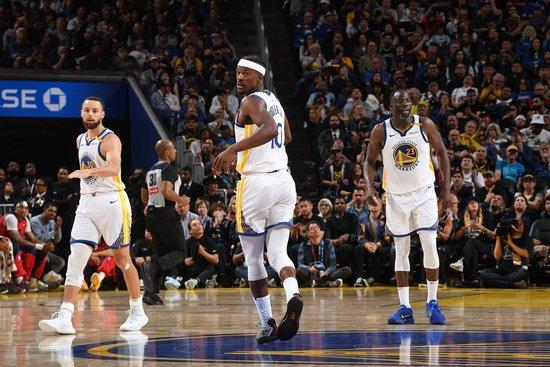
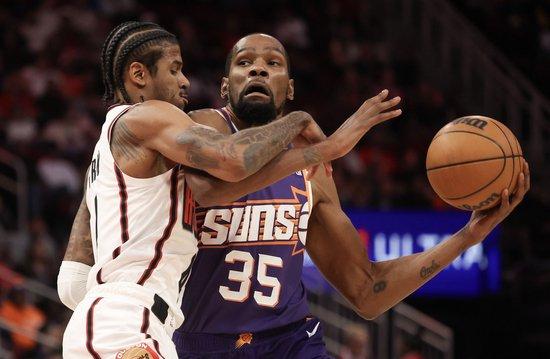
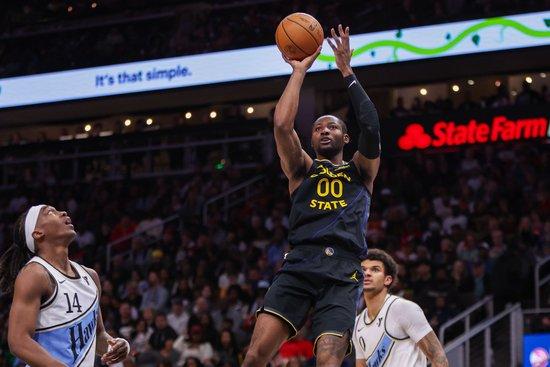
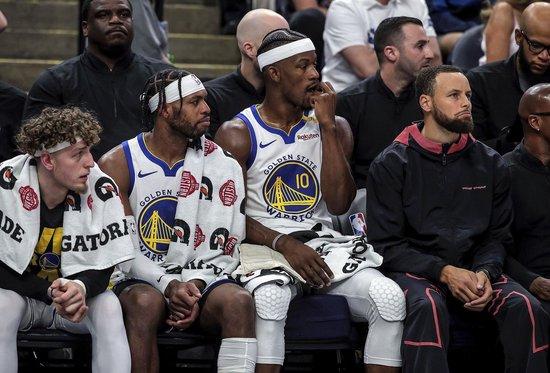
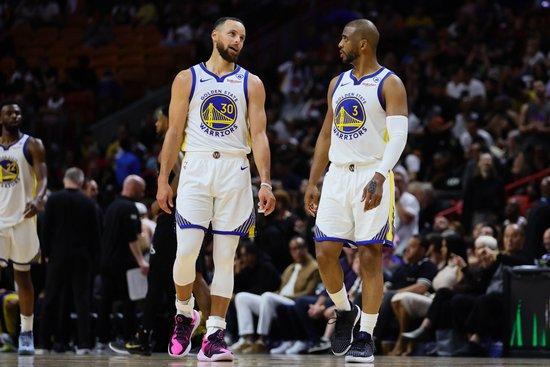
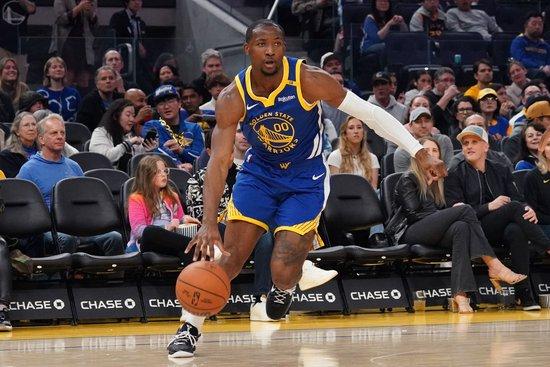
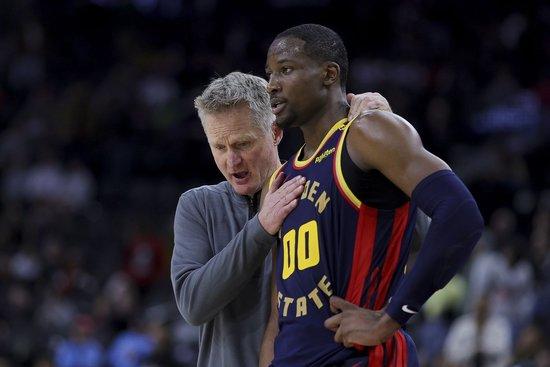
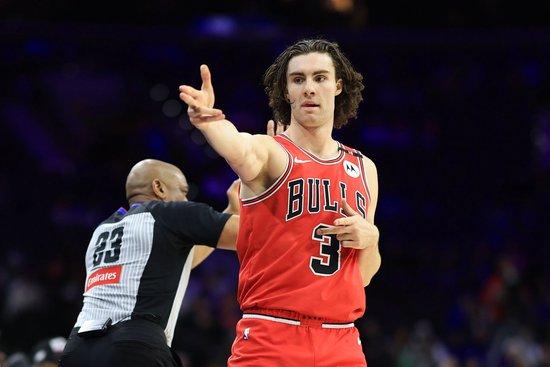
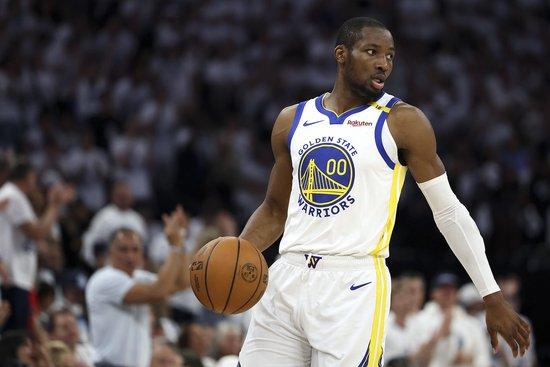
Translator’s Note: The original text was published by The Athletic, with all data up to the time of publication (July 25th, local time) and the mentioned dates have been converted to Beijing time. The views expressed in the article are not related to the translator or the platform.
Athletes like Jonathan Kuminga, who have been restricted free agents for nearly a month, rarely accept offer sheets—this is essentially a gamble, betting on their ability to return to their parent team with a one-year contract next summer and then reenter the market again. However, this strategy is not common due to its reasons being fully justified.
Regarding Kuminga’s situation, he could continue negotiations with the Warriors—the team that selected him seventh overall in the 2021 NBA Draft. Alternatively, he could choose to accept an offer sheet worth $8 million for one year back at the Warriors, where he would have the power to veto any trades during that period, and then reenter the market as a fully unrestricted free agent next summer.
However, accepting an offer sheet could potentially harm both parties, presenting a risk for Kuminga and potentially a disaster for the Warriors—especially if the findings of The Athletic’s investigation are confirmed.
The Athletic recently conducted an investigation among 16 individuals working for competitors’ management teams, asking them what kind of contract they believe would be “fair” for Kuminga under the current circumstances. To encourage candid responses, participants were assured anonymity. The answers ranged from an average annual value of $17 million to $25 million, with an average annual value of $20.4 million.
An executive proposed a two-year contract. Ten people mentioned three-year contracts. Four mentioned four years.
A person within the industry who appreciates Cumming’s games has proposed a massive contract, both in terms of duration and annual value: five years at $125 million.
He compared the 22-year-old player’s talent to that of Detroit Pistons’ defensive stalwart Jaden McDaniels, who signed a five-year, $131 million contract when he was in a similar situation in his career.
“McDaniels has performed well in his role, but JK (Cumming) is more talented, and if he can ever reach his potential, his ceiling could be even higher,” said the team executive.
Of course, despite Cumming’s obvious talent, his output over the first four seasons has been erratic. More importantly, McDaniels and Cumming are not in the same situation.
The restricted free agent market is currently troublesome for four players: Cumming, Chicago Bulls’ Josh Giddey, Philadelphia 76ers’ Kendrick Nunn, and Brooklyn Nets’ Cameron Thomas. By late summer, other teams no longer have salary cap space. Therefore, the momentum to sign all four players has stalled.
According to league sources, the Warriors had sought a potential “first-round pick swap” for Cumming, but there has been no progress. A minor rule in the labor agreement known as “base salary compensation” determines how Cumming’s salary match will be calculated when he is traded, which will differ from how it would be calculated if he were acquired by a new team, making any calculation for a first-round pick swap complicated. So far, the most likely scenario seems to be that all four players renew their contracts with their previous teams.
If Kuminga is dissatisfied with the contract offered by the Warriors, this presents the possibility of accepting a qualifying offer. This offer would allow him to receive significantly less than his market value in salary within a year, but it would give him access to the free agency market in 2026, where more teams will have salary cap space and can offer him a more lucrative contract. For restricted free agents, their former team has the right of first refusal, which allows them to match any offer with the same price to retain him, thus suppressing his market value. If Kuminga were a fully unrestricted free agent, he could sign with any team at his discretion.
The executive who mentioned that Kuminga could sign for two years—Kuminga averaged 15.3 points per game last season, playing only 24.3 minutes per game—was hesitant to recommend a short-term contract because he did not doubt Kuminga’s abilities. In fact, among the remaining four restricted free agents, Kuminga was the one he most favored to accept a qualifying offer.
Therefore, the executive proposed a compromise: two years at $45 million.
“Kuminga is a wing player, so his minimum salary should be at the mid-level exception,” said the executive. “That’s why he can take the risk of accepting (a short-term contract) or a qualifying offer. (If he accepts the qualifying offer), there will be several teams with salary cap space next summer, and they might also be interested after failing to sign big names.”
There have been players who have accepted qualifying offers before. Sometimes, the outcome is very smooth. Ben Gordon did just that fifteen years ago, when he had an outstanding season with the Bulls and then received a high-paying contract from the Pistons in the second summer afterward.
Other times, such a choice is a disaster, just like Norlens Noel, who received a massive early contract extension but chose to decline it because it was not the top salary and instead accepted a qualifying offer, only to end up with a minimum salary contract in the following offseason as a free agent.
However, there’s an opinion that the risk posed by Cumming accepting a qualifying offer for the Warriors outweighs his own risks, as explained by an executive who offered Cumming a three-year, $65 million contract.
“If he accepts a qualifying offer, from a team building perspective, the Warriors are finished because they need him to sign a contract that can be traded,” said the executive. “That’s their key task.”
Since losing Chris Paul last summer, the Warriors, which had a record of 48 wins and 34 losses last season but were eliminated in the second round of the playoffs, have been searching for replacements—not necessarily someone with a clear head, but rather someone whose salary is comparable to Paul. The NBA is currently like this; the most common way for teams to improve is through trades, not free agency, and the salary matching rules are stricter than ever before, making contracts above the mid-level but below the max more valuable.
The Warriors acquired Paul partly because they needed to rejuvenate a salary bracket. They traded Jordan Poole for this future Hall of Famer, whose salary in the 2023-24 season was slightly over $30 million. When Paul signed with the Spurs last summer, that number dropped to zero.
All teams in the league are continuously trying to extend those middle-tier salaries as far as possible. Cumming’s status as a free agent gives the Warriors an opportunity to create a new chain.
Even if the Warriors do not view Kuminga as part of their long-term plan—given his sometimes poor fit with the team’s system and the way they have managed to move him between starting lineups—they might still value him as a trade chip just as much as they value him as a player.
The Warriors might need a player in this salary range more than any other team.
In their roster, there are three players whose annual salaries exceed $20 million: Stephen Curry and Jimmy Butler, both holding top-tier contracts, and Draymond Green, who will earn $25.9 million in the new season and is the cornerstone of the team. Moses Moody and Buddy Hield, who can contribute next season, will each earn $11.6 million and $9.2 million respectively. The remaining salary figures plummet significantly. Brandon Ingram’s salary essentially equals that of an established veteran. The salaries of the remaining three players are even lower.
The Warriors need players, and they need an ideal contract between Moody and Butler’s salaries, which could provide them with a tool to acquire key players mid-season.
Kuminga is young, talented, and has enough admirers within the league to meet these requirements.
“(Among these four restricted players), I have the least confidence in (Kumang) considering the Warriors’ need for tradeable salary. His contract value and player value seem to be most mismatched,” said a participant who suggested offering Kumang a three-year, $53.5 million (including player options) contract. “Personally, I would give him a contract slightly above Grimes’s salary, but I believe the final contract amount will be higher—about 12% of the salary cap, with a base salary around $18 million, bringing more valuable tradeable salary to the Warriors through a ‘2+1′ contract.”
However, this contract is one of the milder ones mentioned in the survey.
There was a two-year contract with an overvalued salary, i.e., $22.5 million per season.
The total amount of the four three-year contracts ranged from $51 million to $60 million. Two people proposed a three-year, $65 million plan. Another person mentioned a three-year, $68 million deal, and another person claimed a three-year, $70 million offer.
Out of the ten respondents offering three-year contracts, five included player options in their agreements.
Their rationale followed the same logic: If Kumang cannot get a massive contract today, short-term flexibility could help him quickly secure one. In such cases, Kumang could play two more seasons under this contract before entering the market again in 2027, by which time he would be a fully unrestricted free agent and might have more teams with salary cap space.
“If I were an agent, I would try to negotiate a short-term contract so that I could leave there and still make some money during that period,” said a team executive who suggested signing a three-year, $65 million contract.
Negotiators often use comparable contracts to measure the value their clients deserve. Considering this, when suggesting a three-year contract worth $70 million in guarantees and an annual salary of $23.3 million, the executive mentioned another young, aggressive scorer.
A year ago, when a player from the same 2021 draft class as Kuminga had the right to a pre-expiration extension, he ultimately reached a significant deal with his team—although for a second-round pick, the contract wasn’t as generous as one might have imagined.
Jared Green signed a three-year, $105 million contract with the Rockets, which will take effect this season. Kuminga has yet to prove he can reach Green’s level. At that time, the Rockets’ salary situation was more flexible than it is now with the Warriors. But the philosophy remains the same.
These are two players of similar age and exceptional talent who can explode at any moment, but their scoring-first style has sparked mixed reactions, including from their own teams.
“It feels like a Jared Green-style contract, which maintains his tradeability,” said the team executive who suggested signing a three-year, $70 million contract. “It’s definitely less than what he might have wanted, but the player options give him some choices.”
Right, and if Kuminga signs such a contract, he and Green could share another commonality: just a month ago, Jared Green was traded by the Rockets after reaching a one-year extension with the team.
Since the Rockets had his salary available, they only needed to add another key player, Dillon Brooks, in the Kevin Durant trade. Green’s mid-level salary facilitated the introduction of a superstar.
Getting the greatest scorer among a generation is the best scenario.
However, this is an example of how contracts like Green’s, especially those belonging to young players with room for growth, can provide teams with flexibility to retain options.
The Warriors would hope to maintain flexibility, ready to seize opportunities for immediate upgrades, especially given that Curry, Butler, and Draymond Green are all in their 35s to 40s. Kuminga, like anyone else, would want a substantial compensation package.
Even though the restricted free agency market feels oppressive to everyone involved, both sides can still find a worthwhile compromise.